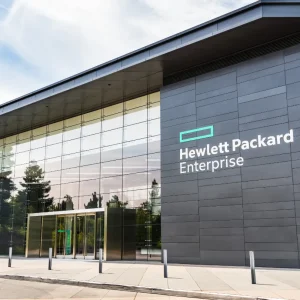
Even long established companies face increased competition not just from their rivals but also from new entrants. Providers like BlaBlaCar, founded 2006, and Uber, founded 2009, show that disruption can arrive from a clear blue sky. Tesla sold its first car in 2008 but its market cap is bigger than Ford which has been selling cars for over a hundred years.
The need for constant innovation should be powered by enterprise technology, by increases in connectivity and by improvements driven by data analysis.
But in fact the researchers found that enterprise technology was cited by a majority of those surveyed as a barrier rather than an enabler of the push for speed.
Inflexible and rigid technology is stopping businesses from moving as quickly as they need to in order to keep up with the competition. Rigid technology platforms were the most mentioned barrier to speeding up product development, ahead of regulatory and statutory problems or a lack of leadership.
This is not all the fault of the IT department.
Oxford Economics found a wide understanding of the need for a broad cultural change to enable the business to innovate more quickly.
Many enterprises could learn these cultural lessons from their IT departments. Software development models like agile and scrum-based techniques can be more widely used within the business to speed up product and service development.
There also needs to be a change in defensive corporate cultures towards an atmosphere more accepting of the risks of moving quickly which includes the possibility of occasionally failing.
The best of devops and the adoption of ‘cloud speed’ means today’s IT department can react far more quickly to the changing demands of the business.
Where once IT departments specialised in saying no, in controlling limited budgets and putting reliability ahead of innovation they are now expected to play a fuller role in developing future strategy.
At the same time other departments, whether they are marketing, human resources or business strategy, are understanding the role of new technologies like mobile applications, big data analysis and Internet of Things can play in driving the business forwards.
The old processes of speccing, procuring, patching, deploying, networking, testing and making available a server has been replaced by the almost instant access a virtual machine and a cloud contract can provide.
Likewise software is now updated on a daily basis by many providers instead of the monthly or even quarterly releases of the past.
The difficulty for enterprise technology is that its platforms are often not capable of dealing with such aggressive change.
Because platforms have grown over time in an ad-hoc manner. IT is likely to have settled into siloes for departments and for functions like storage, networking and processing. Even individual staff members are likely to fit into one or other of these siloes.
Converged systems were meant to solve this problem.
A more likely solution is offered by truly composable infrastructure which can fit together like Lego pieces.
This reflects the flexibility of software in a system’s hardware. By creating common, component-based pools of resources which can be accessed by different parts of the business IT can create the ultimate flexible provisioning for whatever the enterprise demands.
Such an infrastructure can be quickly composed to deal with the demands of one application – perhaps to calculate month end financials. Then it can almost instantly be recomposed to support other applications and business functions.
Such a systems requires a common set of APIs to make this possible.
It also requires a high degree of automation to avoid being too complex to actually use. HPE Synergy allows much of the provisioning and scaling to be done automatically.
Such a platform can also support bi-modal IT.
This is the twin pressures which today’s IT departments much work under – providing existing technology services reliably but for the lowest possible cost while simultaneously supporting rapid development of new services.
The final part of creating a platform which enables rather than prevents the acceleration of business development is embracing a hybrid environment.
The argument over ‘cloud versus in-house technology’ has now evolved into an understanding that there is no single answer for anyone.
By embracing a mixture of cloud and data centre based platforms companies can exploit the advantages of both and avoid the negatives.
Start-ups, with their unpredictable demand for technology and their limited funds, have helped pushed cloud to the centre of enterprise technology strategy. But as such companies develop and mature they tend to invest in in-house systems partly because demand is likely become more predictable but also because of the advantages in-house systems provide.
Allowing developers to best optimise the applications at the centre of the business, as well as creating and protecting intellectual property, is best done in your own data centre.
Composable hardware and the wider choice of purchasing models means that cloud is not automatically the cheapest choice any more. Pay per use and other leasing models can make in-house technology a real competitor.
Cloud providers have had far higher utilisation rates, and therefore return on investment, than on premises data centres but composable platforms can hugely increase how much the hardware is used.
But for certain functions the speed of deployment which a good cloud provider can offer brings its own advantages to the business.
Such a hybrid infrastructure also requires a management system which can run both types of technology with a high degree of automation.
Predicting the needs of the business beyond the next five years is next to impossible.
But a platform built on flexibility, composability and the utilisation of both cloud and on-premises technology gives you the best chance of reacting to whatever the future brings. At the very least it should provide a technology platform which genuinely supports the business rather than acting as a brake on development and change.






